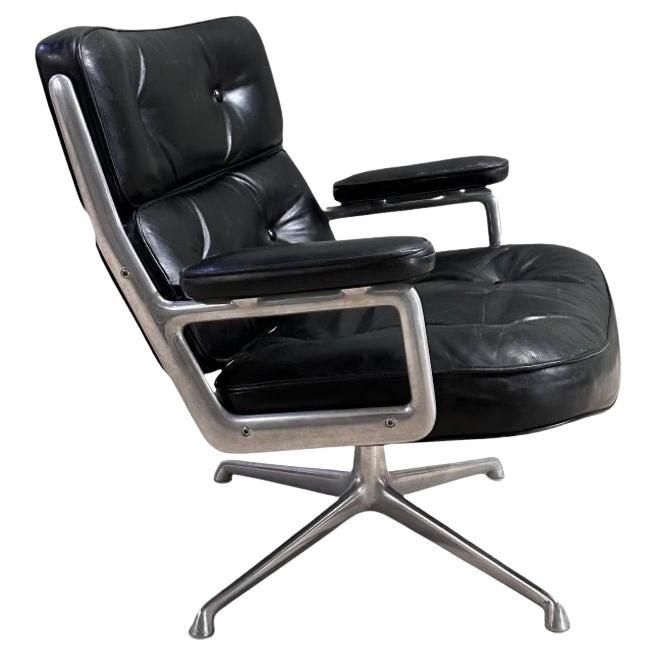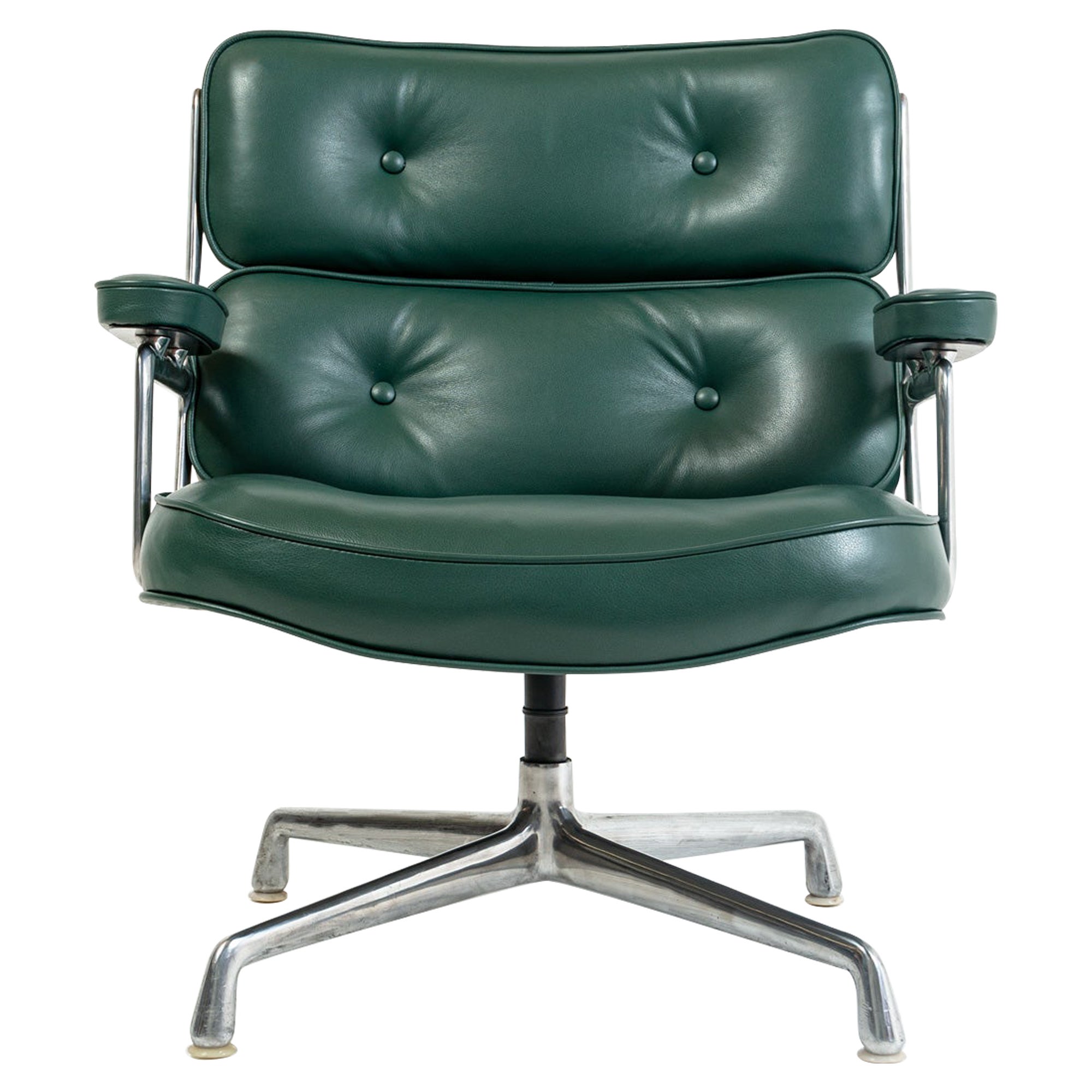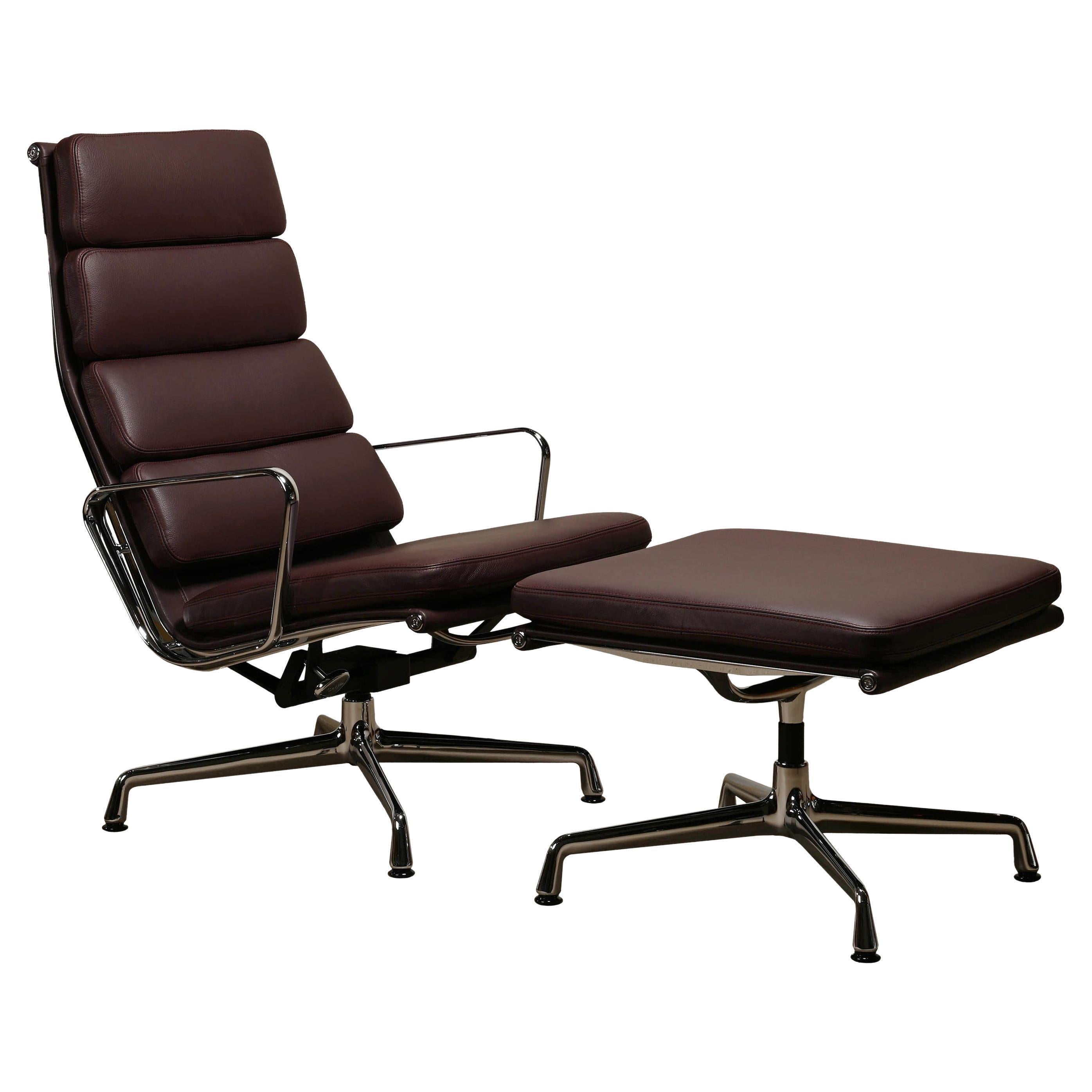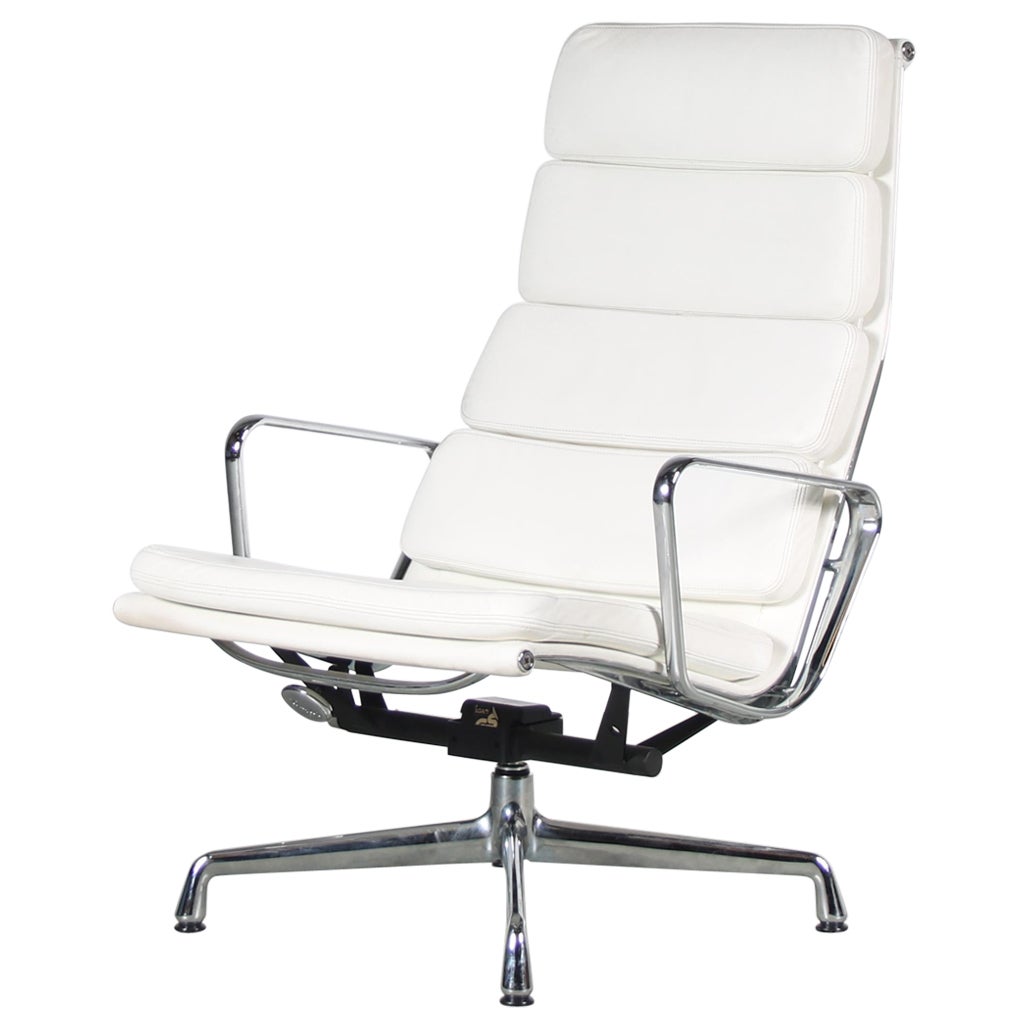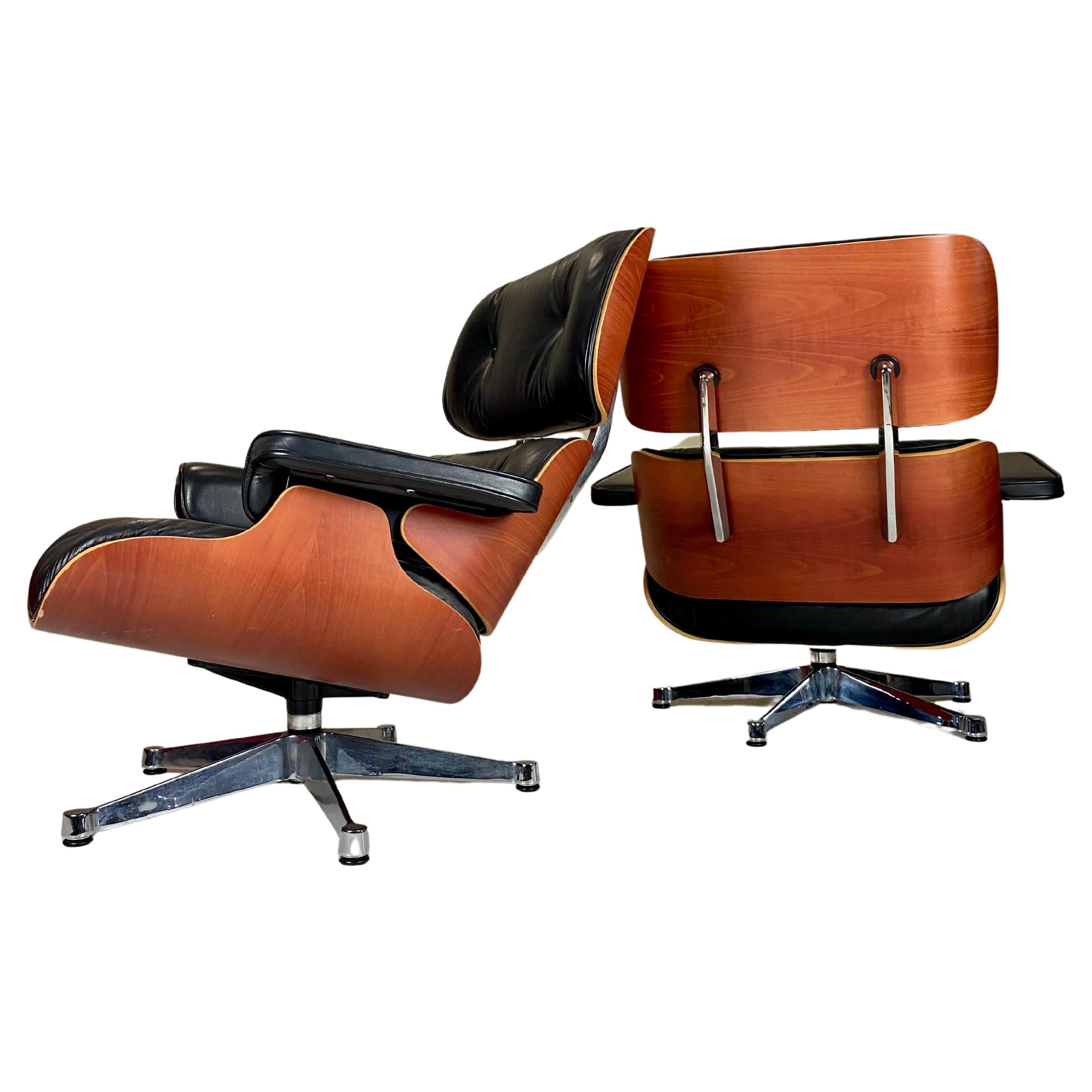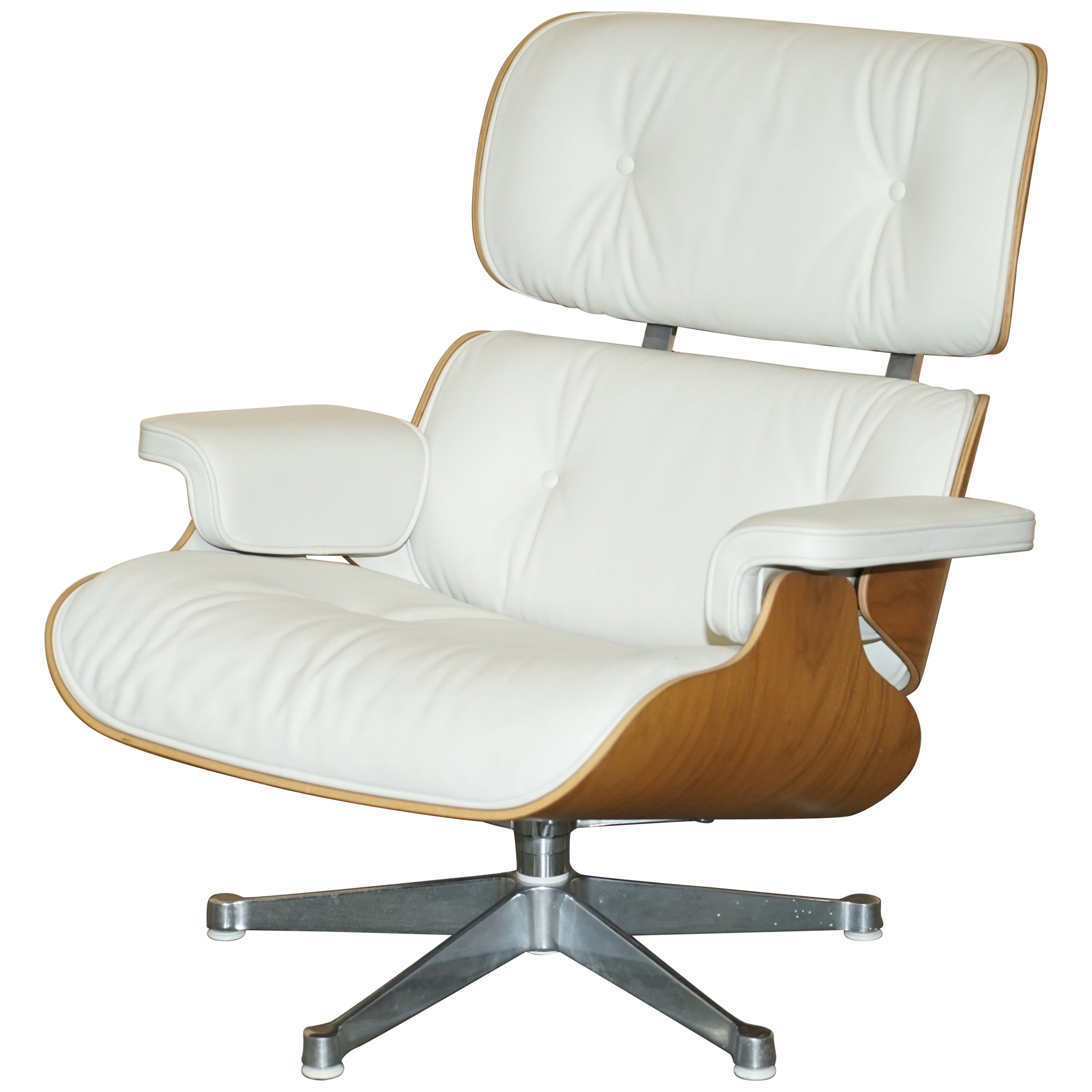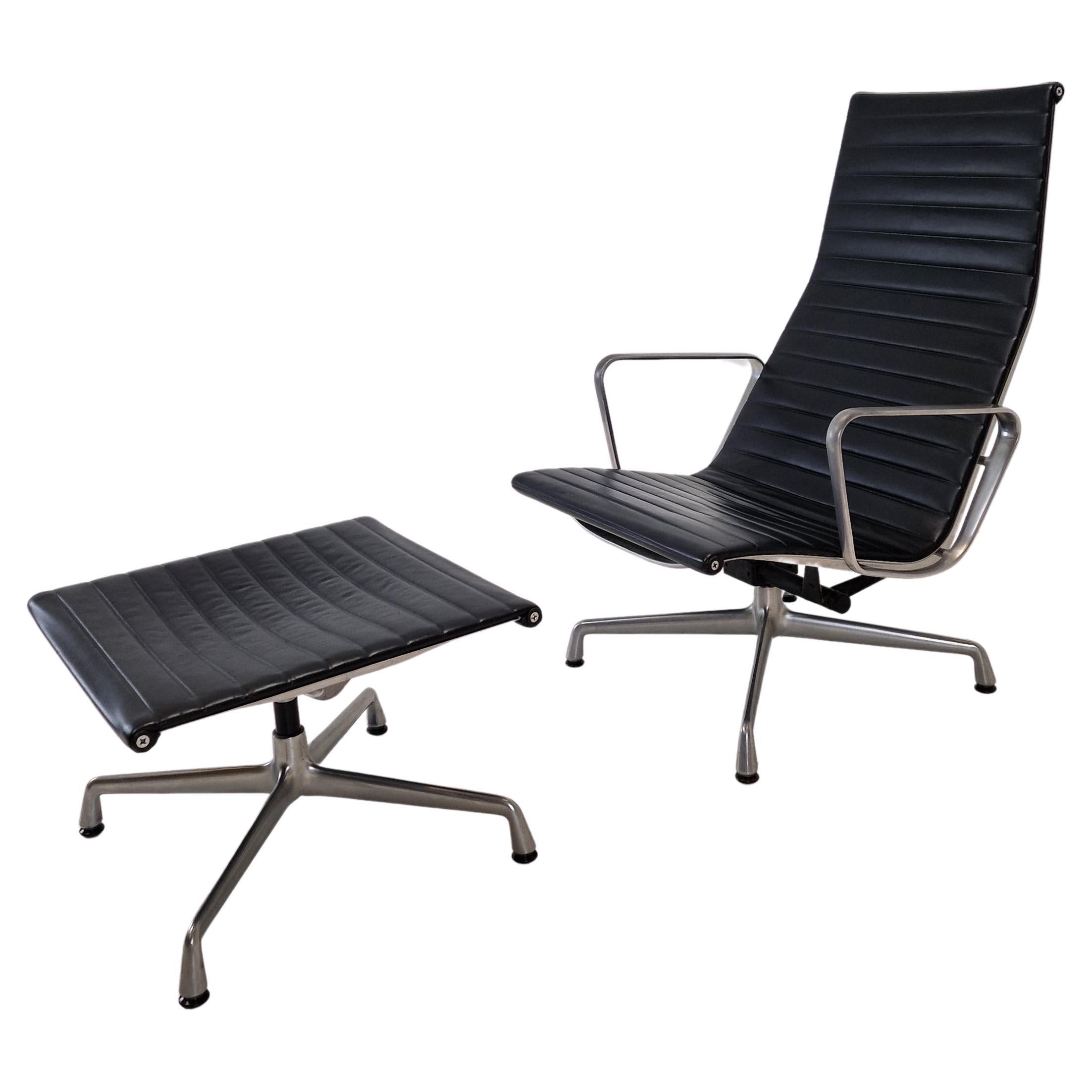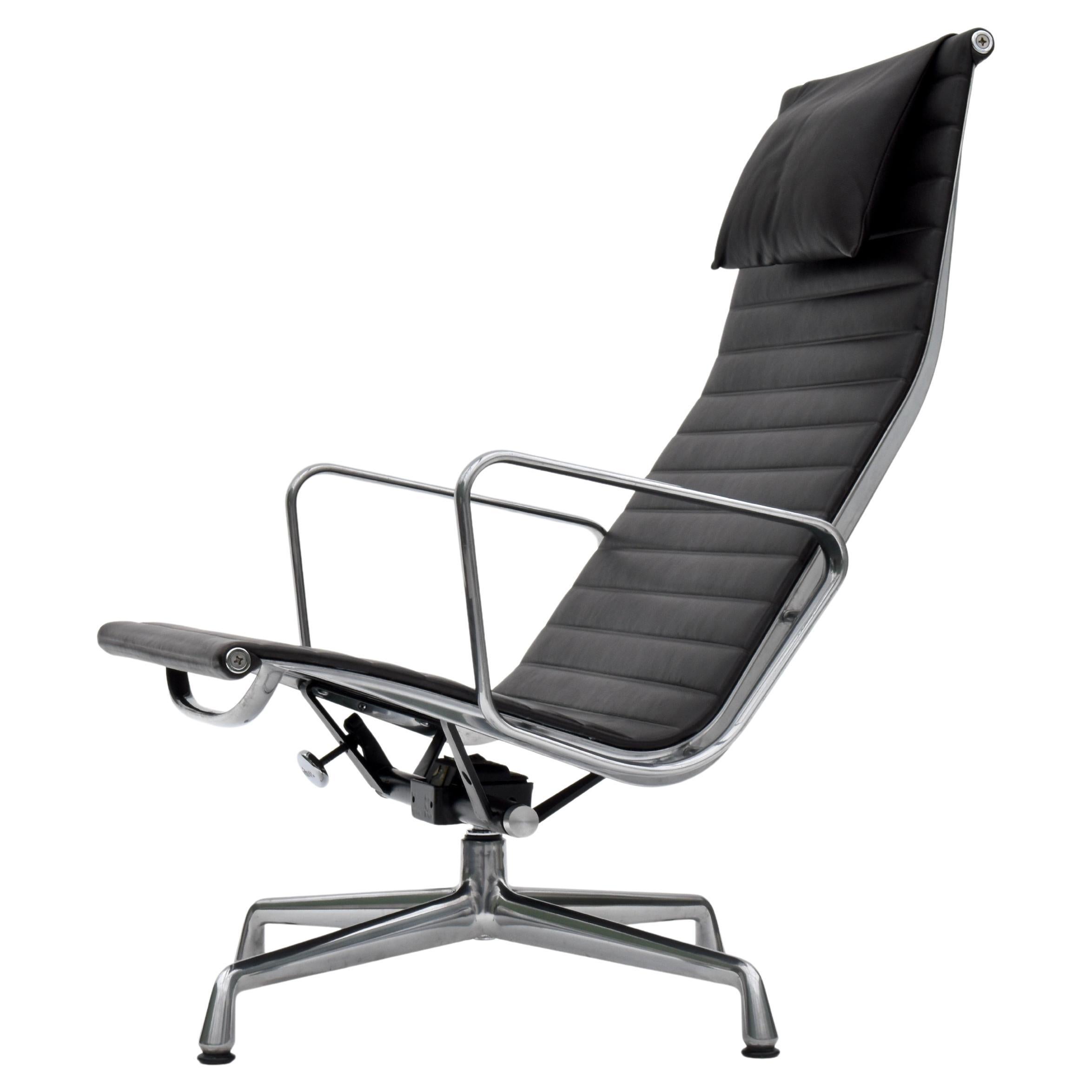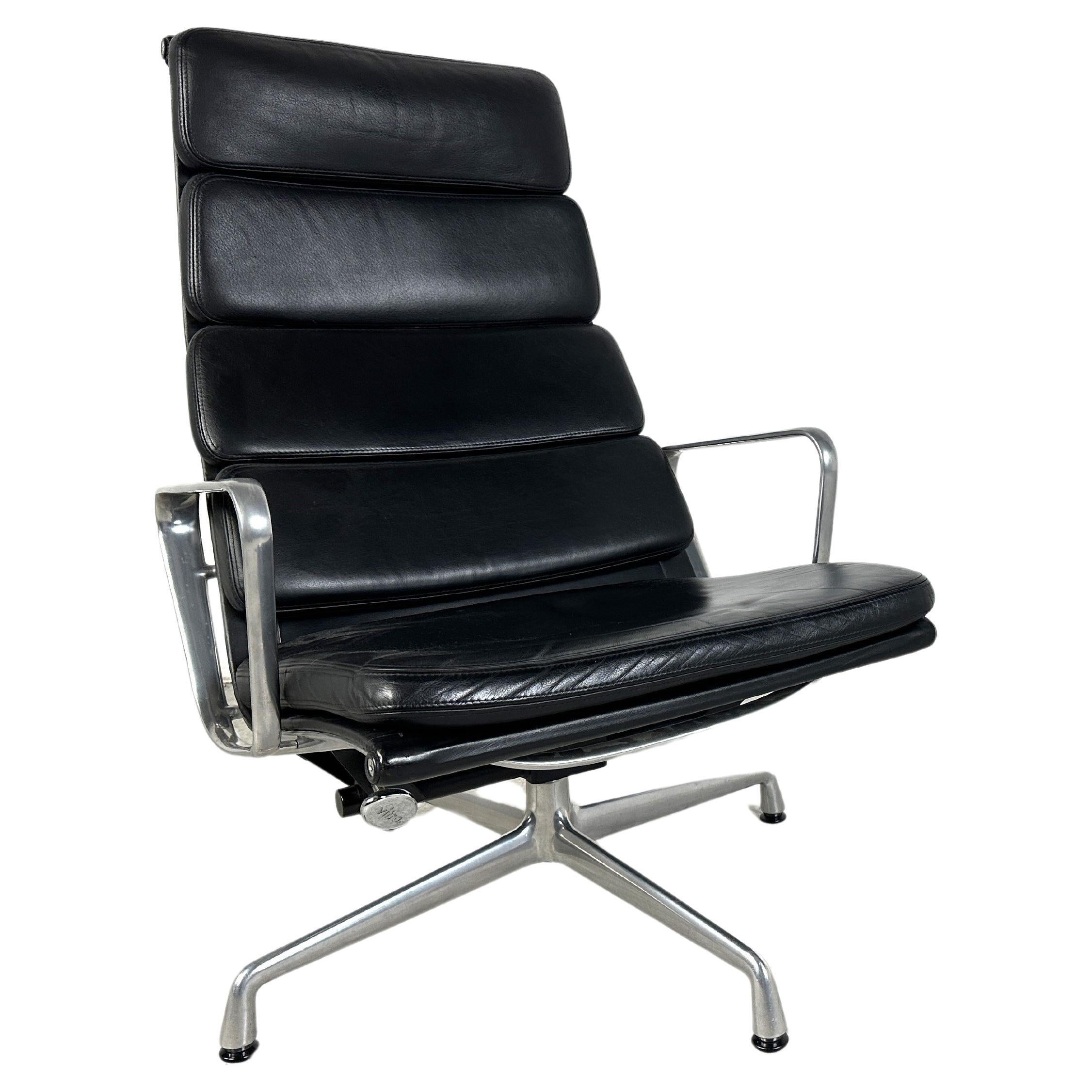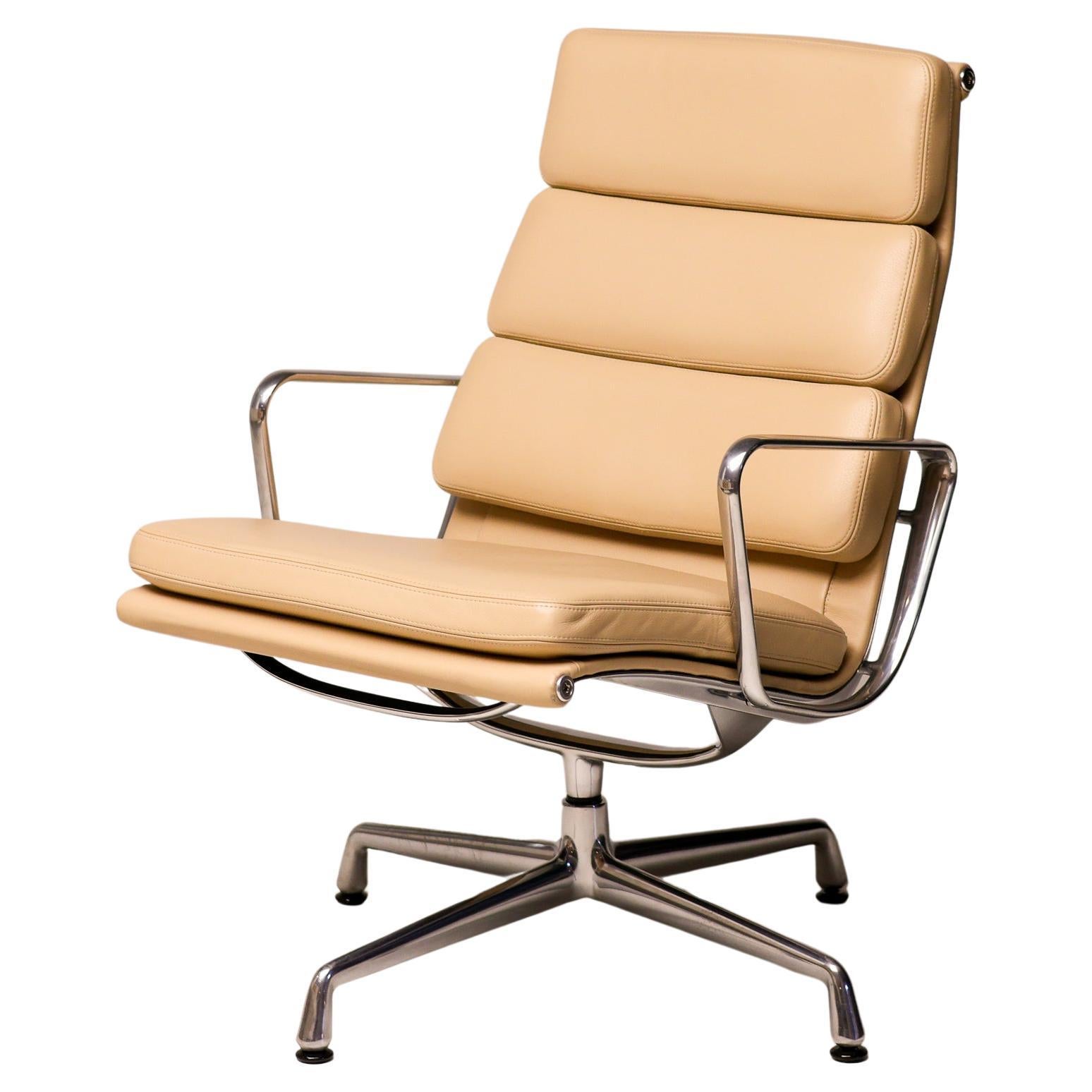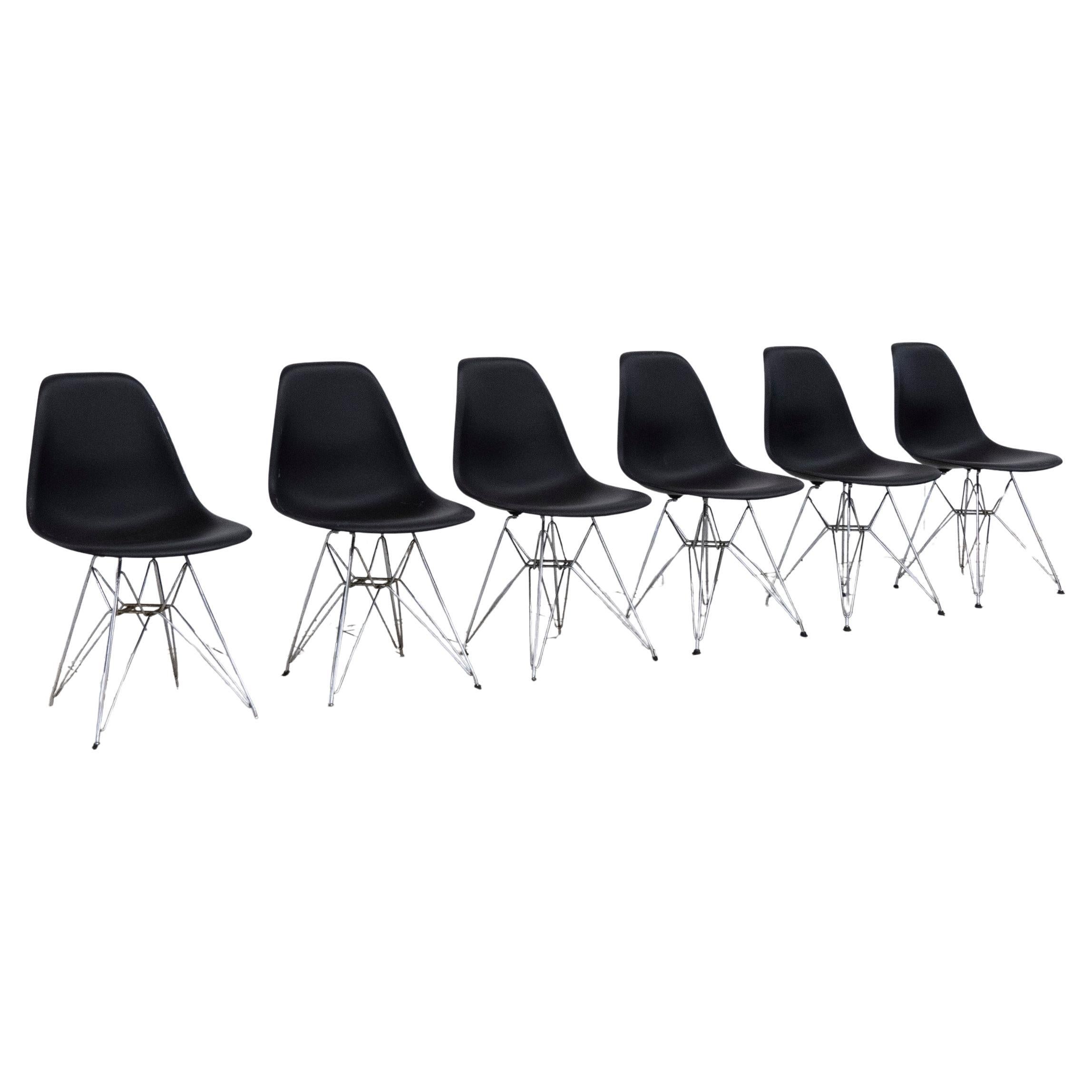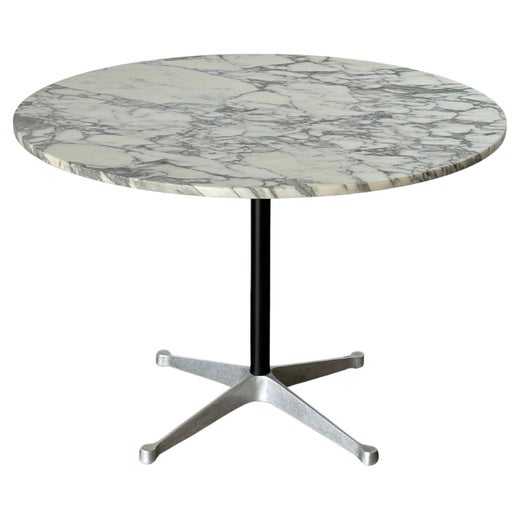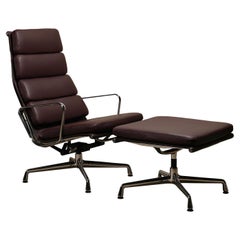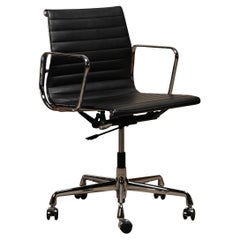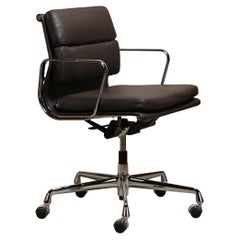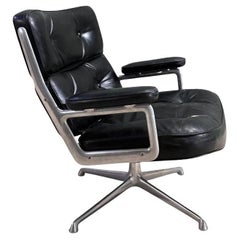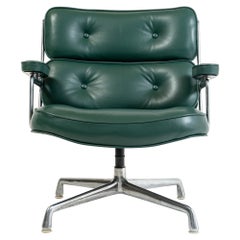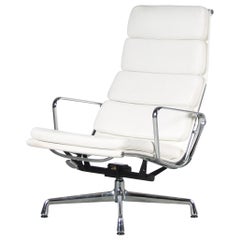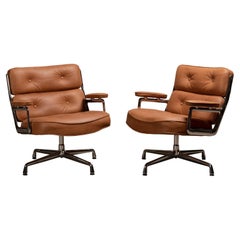
Charles & Ray Eames ES105 Lobby Chairs in Cognac Leather by Vitra
View Similar Items
Charles & Ray Eames ES105 Lobby Chairs in Cognac Leather by Vitra
About the Item
- Creator:
- Design:
- Dimensions:Height: 30.71 in (78 cm)Width: 29.14 in (74 cm)Length: 30.71 in (78 cm)Seat Height: 16.54 in (42 cm)
- Sold As:Set of 2
- Style:Mid-Century Modern (Of the Period)
- Materials and Techniques:
- Place of Origin:
- Period:
- Date of Manufacture:1991
- Condition:Reupholstered. Wear consistent with age and use. Light pitting chrome plating. Recently reupholstered in cognac leather.
- Seller Location:Amsterdam, NL
- Reference Number:1stDibs: LU1710226369672
Eames Executive Chair
American chess grand master Bobby Fischer pronounced the Eames Executive chair to be so comfortable that he insisted it was the only chair he could concentrate on during his world championship match against Boris Spassky in Iceland in 1972. In the end, both Spassky and Fischer were seated on the lightweight aluminum and leather chairs that have been seen in offices around the world since the piece's debut in 1960.
Modern American design luminaries Charles and Ray Eames (1907–78; 1912–88) initially came up with the concept for the Executive chair at the request of Time Inc. founder Henry Luce for the lobbies of the Time & Life Building in Manhattan. Luce had asked the Eameses to design several of the property’s lobbies as a return favor for their use of the Time/Life photo library, to which they had been granted access for their film Glimpses of the U.S.A., first shown at the American National Exhibition in Moscow in 1959.
Conceived to be smaller than the now-famous Eames lounge chair, the Executive chair was versatile enough to be used as a conference-room chair while still extremely comfortable. Since then, the Eames Executive chair, which features three individual upholstered cushions, has become so synonymous with chic mid-century modernism that examples of it were used around the conference table on the set of the TV series Mad Men.
Charles and Ray Eames first met at Cranbrook Academy of Art in Bloomfield Hills, Michigan, where Ray was taking classes after studying painting with Hans Hofmann in New York. Charles had already established his own architecture practice in St. Louis, when he received a fellowship to Cranbrook and later headed its industrial design department.
After marrying in 1941, the newlyweds moved to Los Angeles, where they established the Eames Office and eventually built their lifelong residence, the Eames House in Pacific Palisades as part of the Case Study House Program.
Perhaps best known for their visionary work with molded plywood, the Eameses’ furniture designs, toys, graphic and textile designs, films and architecture truly transformed American interior design and furniture like almost no other designer of the 20th century. Many museums throughout the United States, such as the Museum of Modern Art in New York, hold examples of the Eames Executive chair in their permanent collections.
Herman Miller, the core business of which was office furnishings by the 1960s, continues to produce the Eames Executive chair. In Europe, the alluring leather swivel chair is manufactured by Vitra as the Eames Lobby chair.
Charles and Ray Eames
Charles Eames and Ray Eames were the embodiment of the inventiveness, energy and optimism at the heart of mid-century modern American design, and have been recognized as the most influential designers of the 20th century. The Eameses were lovers of folk craft who had a genius for making highly original chairs, tables, case pieces and other furniture using traditional materials and forms.
As furniture designers, filmmakers, artists, textile and graphic designers and even toy and puzzle makers, the Eameses were a visionary and effective force for the notion that design should be an agent of positive change. They are the happy, ever-curious, ever-adventurous faces of modernism.
Charles Eames (1907–78) studied architecture and industrial design. Ray Eames (née Beatrice Alexandra Kaiser, 1912–88) was an artist, who studied under the Abstract Expressionist painter Hans Hofmann. They met in 1940 at the Cranbrook Academy of Art in suburban Detroit (the legendary institution where Charles also met his frequent collaborator Eero Saarinen and the artist and designer Harry Bertoia) and married the next year.
His technical skills and her artistic flair were wonderfully complementary. They moved to Los Angeles in 1941, where Charles worked on set design for MGM. In the evenings at their apartment, they experimented with molded plywood using a handmade heat-and-pressurization device they called the “Kazam!” machine. The next year, they won a contract from the U.S. Navy for lightweight plywood leg splints for wounded servicemen — vintage Eames splints are coveted collectibles today; more so those that Ray used to make sculptures.
The Navy contract allowed Charles to open a professional studio, and the attention-grabbing plywood furniture the firm produced prompted George Nelson, the director of design of the furniture-maker Herman Miller Inc., to enlist Charles and (by association, if not by contract) Ray in 1946. Some of the first Eames items to emerge from Herman Miller are now classics: the Eames chair, the LCW, or Lounge Chair Wood, and the DCM, or Dining Chair Metal, supported by tubular steel.
The Eameses eagerly embraced new technology and materials, and one of their peculiar talents was to imbue their supremely modern design with references to folk traditions.
Their Wire chair group of the 1950s, for example, was inspired by basket weaving techniques. The populist notion of “good design for all” drove their molded fiberglass chair series that same decade, and also produced the organic-form, ever-delightful La Chaise. In 1956 the Eames lounge chair and ottoman appeared — the supremely comfortable plywood-base-and-leather-upholstery creation that will likely live in homes as long as there are people with good taste and sense.
Charles Eames once said, “The role of the designer is that of a very good, thoughtful host anticipating the needs of his guests.” For very good collectors and thoughtful interior designers, a piece of design by the Eameses, the closer produced to original conception the better, is almost de rigueur — for its beauty and comfort, and not least as a tribute to the creative legacy and enduring influence of Charles and Ray Eames.
The original Eames furniture for sale on 1stDibs includes chairs, tables, case pieces and other items.
More From This Seller
View AllVintage 1960s German Mid-Century Modern Lounge Chairs
Aluminum, Chrome
Vintage 1950s German Mid-Century Modern Office Chairs and Desk Chairs
Aluminum, Chrome
Vintage 1960s German Mid-Century Modern Office Chairs and Desk Chairs
Aluminum, Chrome
Vintage 1960s German Mid-Century Modern Office Chairs and Desk Chairs
Aluminum
Vintage 1960s German Mid-Century Modern Office Chairs and Desk Chairs
Aluminum, Chrome
Vintage 1940s German Mid-Century Modern Dining Room Chairs
Leather, Ash
You May Also Like
Vintage 1970s American Mid-Century Modern Armchairs
Leather
Vintage 1970s American Mid-Century Modern Lounge Chairs
Aluminum
Vintage 1970s German Mid-Century Modern Office Chairs and Desk Chairs
Steel
Late 20th Century German Mid-Century Modern Lounge Chairs
Metal, Chrome
Vintage 1950s Swiss Mid-Century Modern Lounge Chairs
Chrome
20th Century European Mid-Century Modern Lounge Chairs
Leather, Cherry
Recently Viewed
View AllRead More
A Guide to Herman Miller’s Most Iconic Furniture
The prolific manufacturer has partnered with many of the world’s top designers since opening its doors in 1923. Here are some of the company’s greatest hits, which helped transform the American home and office.
The 21 Most Popular Mid-Century Modern Chairs
You know the designs, now get the stories about how they came to be.
